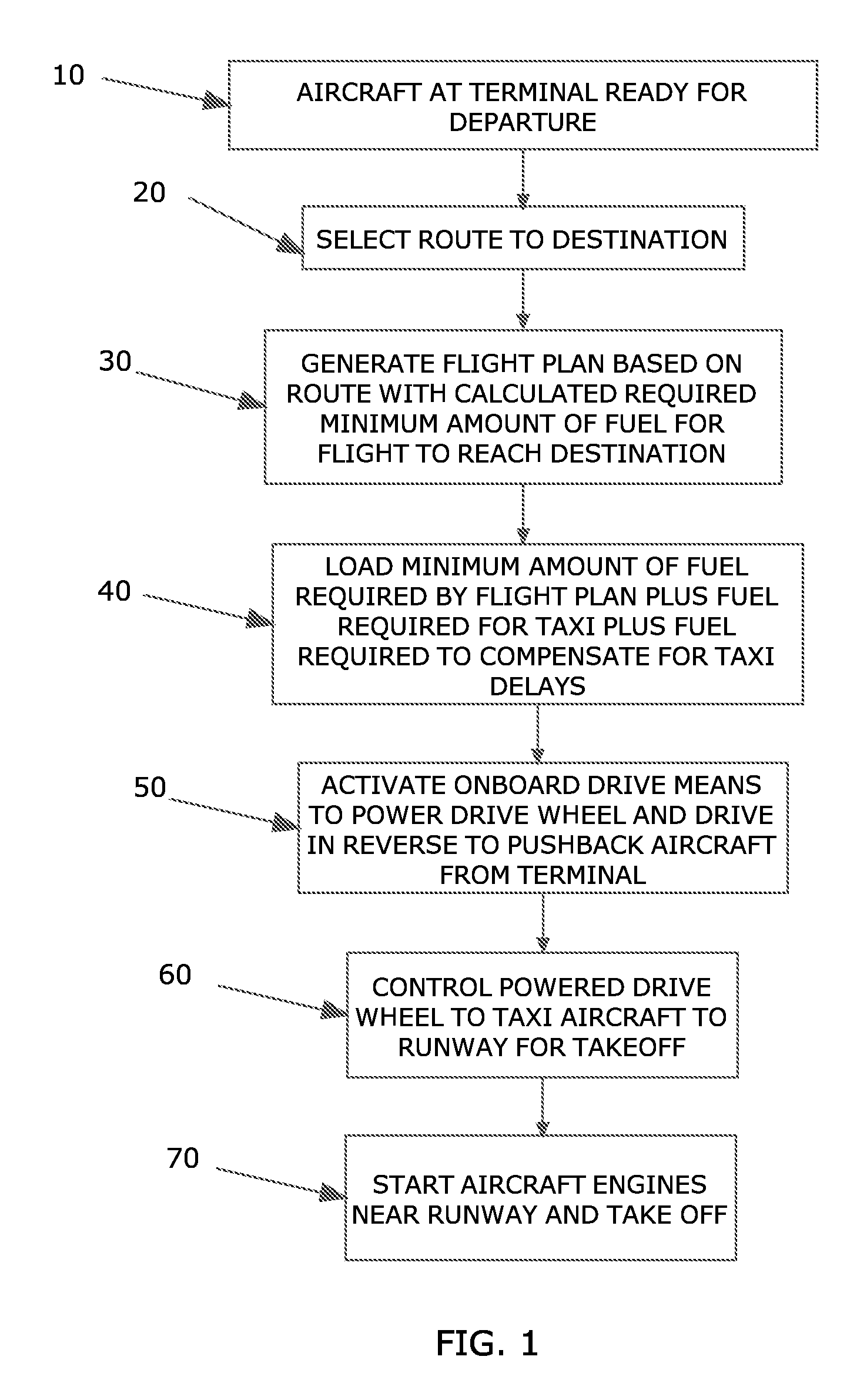Method of reducing fuel carried by an aircraft in flight
- Summary
- Abstract
- Description
- Claims
- Application Information
AI Technical Summary
Benefits of technology
Problems solved by technology
Method used
Image
Examples
Embodiment Construction
[0022]An aircraft's flight plan is designed to ensure that an aircraft has sufficient fuel to travel safely from its departure point to its destination. Flight planners may also be charged with minimizing flight cost, which, in addition to selecting an appropriate route, flying altitude, and flight speed, establishes a minimum amount of fuel that must be loaded on the aircraft for the journey. Since airline operators may not always be able to control the amount of fuel an aircraft burns, they are constantly looking for opportunities to minimize fuel consumption. The greater the minimum amount of fuel an aircraft is required to carry in flight, the more the aircraft weighs and the more fuel the aircraft consumes during flight. One way to reduce aircraft fuel consumption and, hence, fuel costs is to reduce the weight of the aircraft. Heretofore, reducing the total amount of fuel an aircraft is required to carry in flight was not possible without compromising flight safety. The present...
PUM
 Login to View More
Login to View More Abstract
Description
Claims
Application Information
 Login to View More
Login to View More - R&D
- Intellectual Property
- Life Sciences
- Materials
- Tech Scout
- Unparalleled Data Quality
- Higher Quality Content
- 60% Fewer Hallucinations
Browse by: Latest US Patents, China's latest patents, Technical Efficacy Thesaurus, Application Domain, Technology Topic, Popular Technical Reports.
© 2025 PatSnap. All rights reserved.Legal|Privacy policy|Modern Slavery Act Transparency Statement|Sitemap|About US| Contact US: help@patsnap.com


